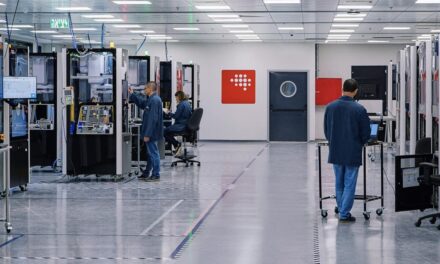Who’s leading in sustainable manufacturing?
Analyst commentary by Alex West, Senior Principal Analyst, Omdia
Sustainability topics have continued to rise to near the top of the agenda for many manufacturing CEOs. More and more we are seeing their commitments published along with their investment in delivering environmentally sustainable business. But how well are companies doing, what else can be done, and who’s setting the example? Following SPS 2023 earlier this month, the annual gathering of the manufacturing industry, Alex West, Senior Principal Analyst in Omdia’s Manufacturing Technology practice takes a closer look at sustainable manufacturing in his latest analyst commentary.
According to a recent Omdia survey 30% of manufacturers describe themselves as having implemented an environmental strategy with a long-term road map, and this is estimated to increase to 42% over the next 12 months. Companies are allocating additional budget to support these such projects.
Target setting is also on the up. In the first six months of 2023, the number of manufacturers having committed to Science Based Targets (SBTis) for emissions reduction increased by 40%.
However, whilst the focus is fixed and intentions are intensifying, the reality of the size of the challenge is only becoming more apparent. Decarbonization of the manufacturing sector is proving more challenging than many expected.
According to Omdia more than 40% of companies are slightly or significantly behind target when it comes to reductions in greenhouse gas emissions. The delay is even more significant in transitioning to renewable energy, with 47% not expecting to meet the targets that have been set. Over the last year the proportion of companies falling behind has only increased.
The focus on the availability of near limitless renewable energy has been misinterpreted to reflect availability by some. And with challenges in not just the intermittency of the energy source, but also the limitations around infrastructure readiness and integration capacity, companies cannot simply rely on decarbonizing their energy source and must look internally at how to improve their usage of energy.
A combination of existing and new technologies will be central to facilitating these improvements, with industrial automation vendors playing a key role in offering solutions across hardware, software and services they can provide.
With industrial electric motors consuming over 7 quadrillion KWH of electricity each year vendors can support customers with both more efficient motors (see the ongoing trend higher efficiency IE4 and IE5 motors), as well as motors drives specified for the optimum energy efficiency. Proper operation and monitoring of hardware from pumps to bearings through condition monitoring solutions is also important in ensuring maximum efficiency.
Beyond this the range of solutions, including energy management and emissions monitoring systems, as well as analytics tools to optimize process control, improve waste management, coordinate across a vendor ecosystem an consider and balance the needs for sustainable operations with business profitability.
The leading industrial automation vendors are not only offering such solutions commercially, but also have unique access to trials and apply it to their own business in order to address their own environmental footprint. But how do they compare?
Omdia recently completed an analysis of the environmental footprint of the top 50 industrial solutions vendors here (registration required). From this data, a subset of the ten largest industrial automation providers were analyzed. Results were mixed, some companies had limited reporting, whilst there was also significant variance in results across companies for some ESG metrics.
The biggest variations across companies were in the metrics of water intensity (the amount of water user per $million), renewable energy as a proportion of total energy, and owned emissions (Scope 1 + 2), whilst the difference in waste intensity and energy consumption intensity.
One should bear in mind that all of these companies are different, and for some industrial automation is one division of many in the company.
Leaders in the headline statistics of energy intensity, owned emissions and renewable energy (as a proportion of total energy) were Rockwell Automation, Siemens, and Schneider Electric respectively, with these companies also scoring significantly better than their peers in aggregate as well.
About the research
E for ESG Reporting: Industrial Automation Equipment Vendor Analysis
Review of emissions, energy, waste, and water management in the industry automation equipment sector, with company comp












